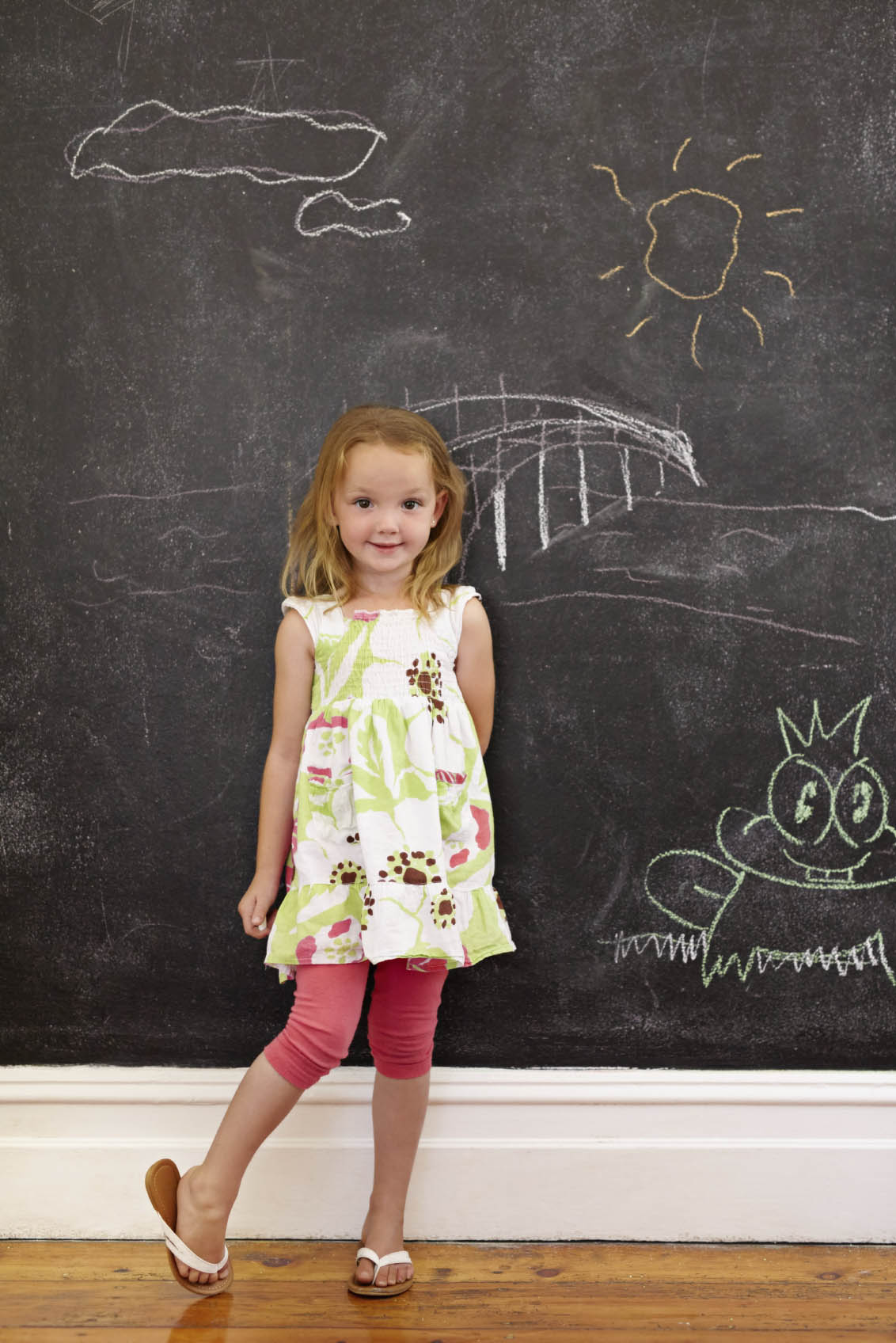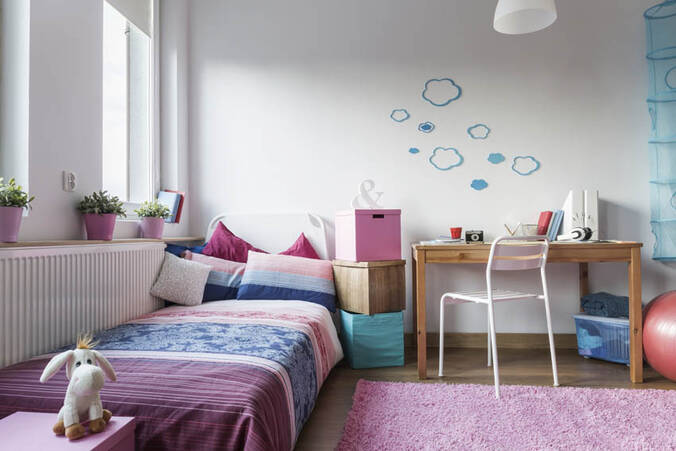Text: Saylee Soundalgekar
Photographs: iStock
A child’s world is not a single space or a room, it is a continuum of spaces. Constant refurbishment, though possible, can prove expensive. And kids outgrow stuff quite quickly. Therefore, it becomes important to select elements that are versatile and multi-functional, says architect Siddarth Garimella.
 A blackboard surface can recieve outpouring of
A blackboard surface can recieve outpouring ofchildish art.
1. When a child is young, including a pull-out bed will prove useful when he's unwell or needs parental company when he is afraid of the bogey-man. The same bed, when he grows older, can be pressed into service at the time of sleep-overs.
2. A chest of drawers is perfect to store the wide range of baby products in the beginning. Later, the same chest can provide the child a way to hone organisational skills.
3.The room could have a couple of additional shelves right from the beginning, which could stack toys, and later, books and handicrafts.
4. Line a wall or one shutter of the wardrobe with blackboard paint. Let your young one scribble away to glory. A couple of months down the line, they can learn the alphabet on it!
5. Nowadays, cribs that turn into toddler beds are available aplenty. Similarly, if you spot a piece of furniture that could ‘grow’ with your child, it’s worth buying.
6.Avoid opting for elements – such as expensive cartoon wallpapers/murals – that will date fast and will be difficult to remove. Instead, go for neutral paint and ‘load’ the room with accessories such as hardware, soft boards and wall-hangings that are easy to ‘refresh’ when the child outgrows them. For instance, a band of chic pink can be added to a girl’s room with white as the basic colour of the walls. This band can later be removed or altered as per the child’s need as she grows up.
7.Soft furnishings can also create changeable looks. Curtains constitute a large visual element, and the right fabric and accessories can introduce the desired look. Instead of buying a car-shaped bed, pick up bed furnishings with Lightning Mcqueen!
8. Art can be used to great effect to create a personalized look, and what could be better than using the art-endeavours of the occupants themselves? Drawings, sketches, and sometimes even project work can make great talking points in a space, ones that can be easily replaced at no great expense.


















